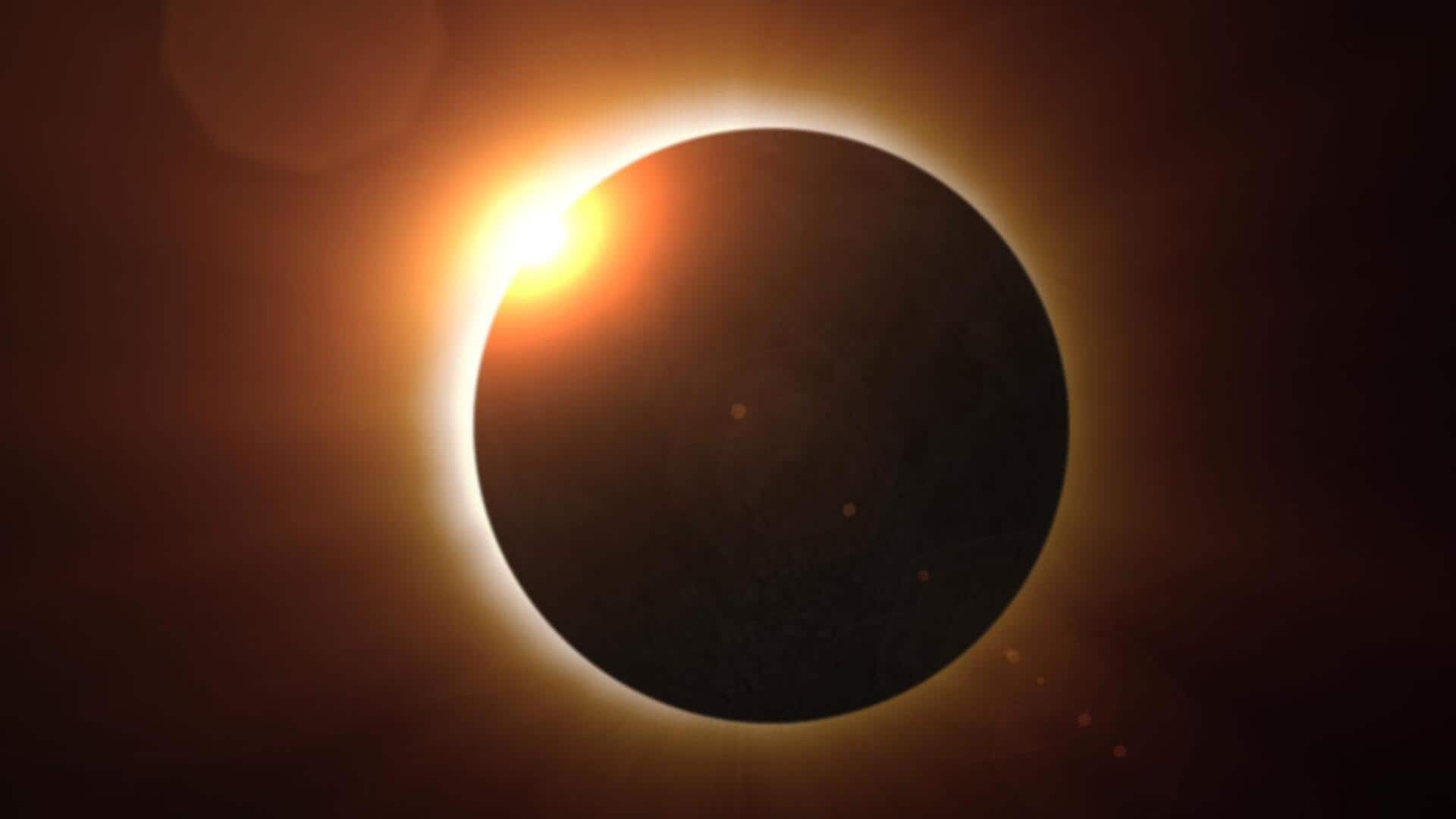
NASA picks 5 experiments to study 2024 total solar eclipse
What's the story
We will get to witness a total solar eclipse on April 8, 2024, when the Moon will completely block out the face of the Sun. Astronomers want to use this opportunity to study the Sun and Earth up close. NASA has picked five science experiments to investigate the upcoming eclipse. Let's take a look at what the investigations are about.
Context
Why does this story matter?
Celestial events always evoke awe and excitement and there is perhaps a lot that we are yet to uncover about them. During total solar eclipses, the Moon obscures the Sun, such that only its outer atmosphere, called the corona, is visible. Taking advantage of this alignment, scientists hope to get a better understanding of the Sun and its effect on our planet.
Finding asteroids
NASA's high-altitude research aircraft is one of the selected projects
One of the selected experiments involves NASA's WB-57 high-altitude research aircraft. It can take images of the upcoming total solar eclipse from 50,000 feet above the Earth's surface. Designed to capture images in infrared and visible light, WB-57 could provide a better look at the dust ring around the Sun and probe for asteroids lurking in the vicinity of the giant star.
Closer view
WB-57 will also make spectroscopic observations of the Sun
To investigate the temperature and chemical makeup of the Sun's corona, WB-57 will also be equipped with spectrometers, along with cameras. Interestingly, the aircraft will fly exactly in the path of the eclipse. Researchers hope these observations could also provide insights into solar winds, streams of particles discharged by the Sun, and coronal mass ejections, which are massive eruptions of solar material.
Sun's activity
Using ground-based telescope, researchers hope to study Sun's active regions
The third experiment involves observing the Sun's active regions—areas with large concentrations of magnetic field—during the eclipse. As the Moon crosses the Sun, it will block different parts of the active regions, letting researchers identify light signals originating from one portion compared to the other. The team will use the 34-meter Goldstone Apple Valley Radio Telescope (GAVRT) in California for this purpose.
Radio communications
One investigation will study how solar eclipses impact radio communications
There's also a project related to radios. The Earth's ionosphere—the electrically charged upper region of the atmosphere—helps radio communications range further distances. However, during solar eclipses, the ionosphere undergoes significant changes, thereby impacting how radio waves travel. In the upcoming eclipses, researchers will establish radio contacts with different locations to record how strong their signals are and how far they travel.
Solar radiation
The fifth project involves tracking the impact of solar radiation
The final project involves the Super Dual Auroral Radar Network, which tracks space weather in the upper layers of Earth's atmosphere. During 2024's total solar eclipse, the darkest part of the eclipse's shadow will pass several regions that have these SuperDARN radars. Hence the event will provide a suitable opportunity to understand the impact of solar radiation on Earth's upper atmospheric layers.